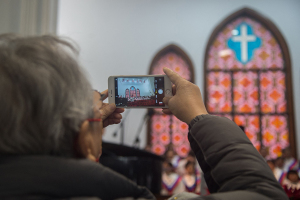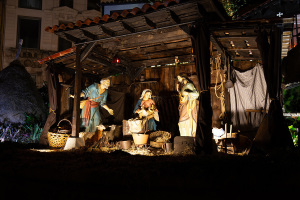Answer to Crop Circle Mystery Lies in Microwaves?
Oregon physicist Richard Taylor says that the art of crop circles is advancing with modern technology.
In a paper published in this month’s edition of Physics World, the director of Materials Science Institute at the University of Oregon delves into the phenomenon and how GPS and microwaves may be used to create crop circles.
“This summer, unknown artists will venture into the countryside close to your homes and carry out their craft, safe in the knowledge that they are continuing the legacy of the most science-oriented art movement in history,” Taylor wrote.
The awe-inspiring occurrences, seemly appearing out of thin air, in elaborate patterns containing up to 2000 circles and other shapes, have been the subject of speculations since the early 19th century when the first crop circles were photographed in Sussex, England.
Since then, over 100,000 circles have been documented and enthusiasts have entertained several theories, including the existence of extraterrestrial life, to explain the circles. No one has ever stepped forward as a crop circle artist and given details as to exactly how crop circles are made.
“Crop-circle artists are not going to give up their secrets easily,” Taylor said.
The most commonly accepted method for making crops circles is using “stompers” or strategically measured ropes attached to planks of wood to accurately measure shapes. It is also said that artists use bar stools to hop from one flattened circle to another without disturbing the surrounding areas.
Taylor proposes that crop circle makers are now using GPS to accurately position the intricate patterns as well as a device called a magnetron, made using parts from a microwave oven and powered with a 12-volt battery flatten corn crops.
He explains that the same radiation waves that heat food within a microwave cause crop stalks to fall over and cool in a horizontal position. Taylor has recreated the method using a magnetron developed by his team at the University of Oregon.
The microwave technique could explain the speed and efficiency of the artists and the incredible detail that some crop circles exhibit, according to Taylor.
He has also discovered that construction lines, accuracy markers commonly used in architecture are also used to design crop circles.
While Taylor uses empirical research to dispel the ideas of UFOs and other farfetched conspiracies, farmers remain none too pleased about the continuing tradition of crop circles popping up mysteriously on their acres every summer.
Tim Carson, who recently had a crop circle of an alien smoking a pipe appear on his land is not a fan of the geometric art, which costs him £1000 each to destroy (approximately $1,627); 125 circles have a appeared on his land since 1990.
“I’m beginning to get a bit tired of it all,” Carson told the Daily Mail.
One of Caron’s crop circles however was famous for being featured on the cover of the Led Zeppelin album Remasters in 1990.



























